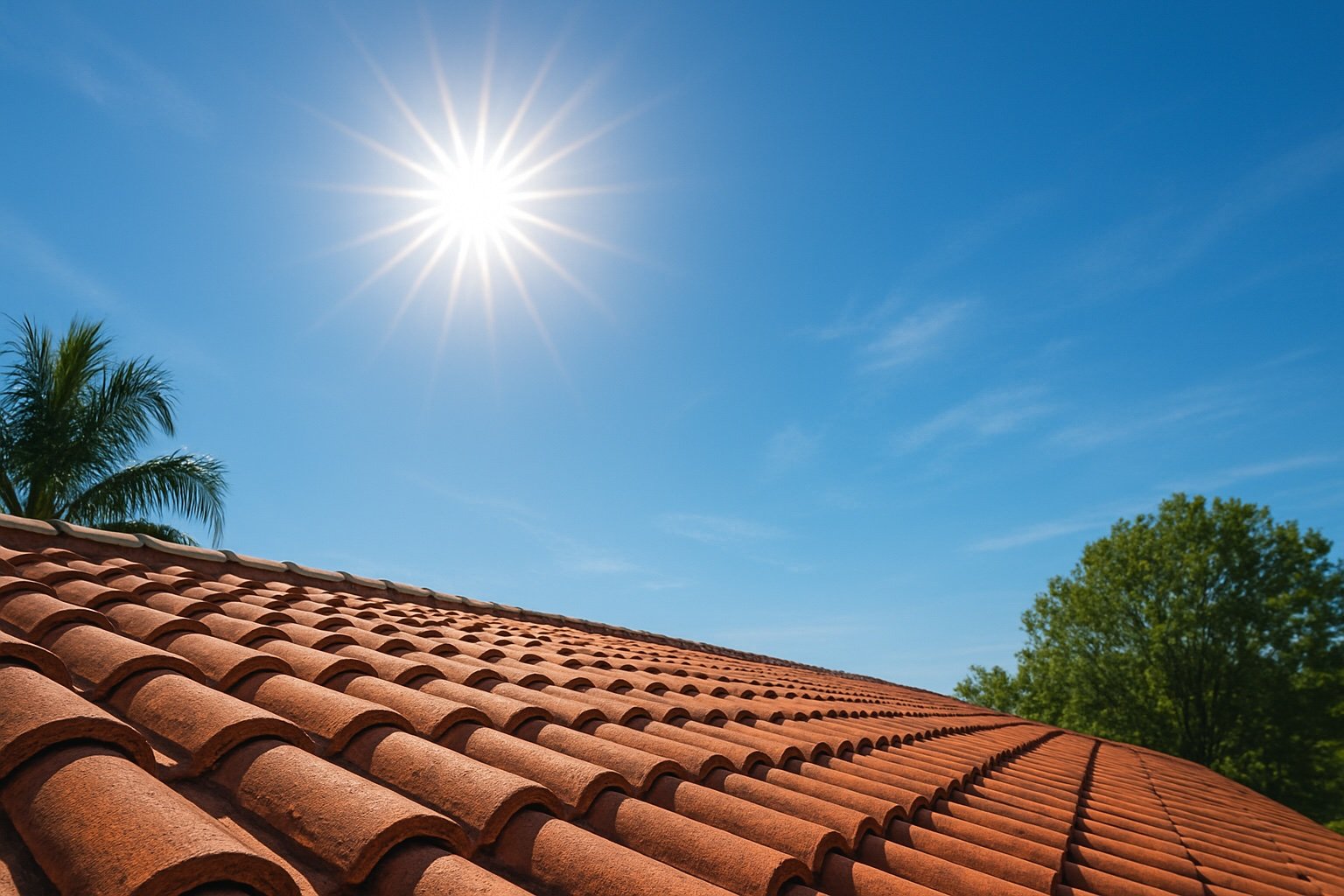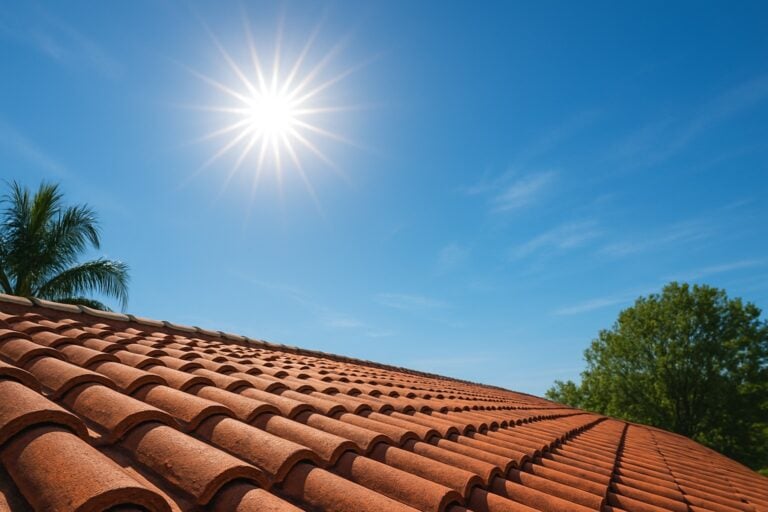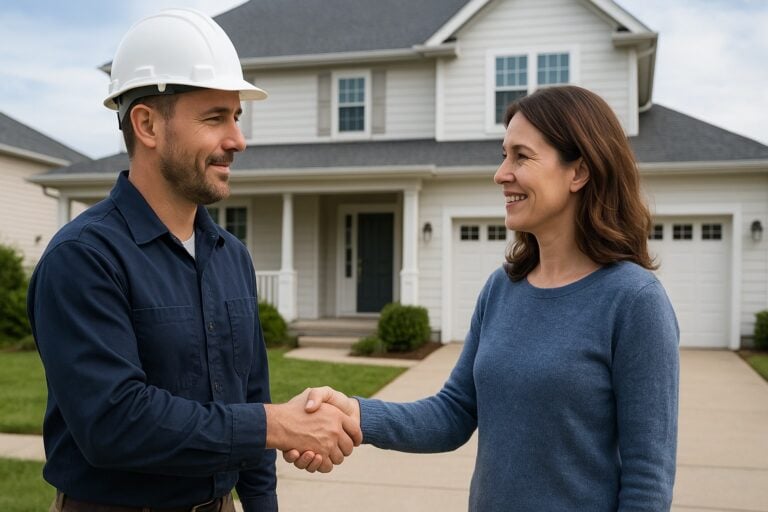When temperatures climb above 90°F and humidity levels reach the high 70s or higher, Florida roofs are under relentless assault. At Steadfast Roofing, serving the Tampa Bay area, we understand the damaging effects of these conditions — and how to safeguard your roof against their worst consequences.
Understanding Florida’s Climate Stressors
Extreme Heat & UV Radiation
- Persistent sun exposure causes roofing materials to degrade: asphalt shingles lose flexibility, roofing adhesives deteriorate, and roofing fibers can become brittle.
- UV rays generate thermal cycles: surfaces heat during the day, cool at night. Repeated expansion and contraction lead to cracks, loosened fasteners, and material fatigue.
High Humidity and Moisture
- Moisture permeates roofing assemblies through micro-cracks or unsealed penetrations.
- Trapped moisture leads to siding deck rot, mold and mildew growth, and corrosion of metal elements.
- Over time, moisture buildup under shingles or tiles can cause blistering, buckling and decay.
Heat + Humidity Synergy
- Humidity reduces heat dissipation, making roofing surfaces stay hot longer and intensifying damage.
- Combined moisture and heat accelerate biological growth (such as algae and mold), which can reduce roof reflectivity and heat resistance.
Key Indicators Your Roof Is Being Damaged
| Symptom | What to Look For |
| Cracked, curling, or missing shingles/tiles | Metal parts shifting, gaps at intersections (such as chimneys and vents). |
| Loose or rusted flashing & nails | Stains on ceilings, peeling paint, blistering walls, or mold in attics. |
| Dark streaks or black/green stains | Algae or mildew growth along north-facing slopes or shaded areas. |
| Soft spots or sagging areas in roof decking | Rot or water damage beneath roofing layers. |
| Interior signs | Soft spots or sagging areas in the roof decking |
Roofing Materials: What Holds Up Better Under Florida Conditions
| Material | Strengths under Heat & Humidity | Weaknesses / Trade-offs |
| Clay, concrete tiles | Shorter lifespan in intense sun/humidity; prone to warping, cracking, algae/moss buildup. | Heavier; needs strong structural support; more expensive installation and maintenance. |
| Metal roofing (coated steel, aluminum) | Reflects solar radiation well; durable; resists rot and pest damage. | Can expand/contract — fasteners may loosen; requires corrosion-proof coatings and quality seams. |
| Asphalt shingles (high-end, sun-reflective) | Lower upfront cost; newer formulations include UV inhibitors and reflective granules. | Engineered for higher heat durability, resistance to mold, and lighter weight. |
| Synthetic options (rubber, polymer blends) | Engineered for higher heat durability, resistance to mold, lighter weight. | Variable quality—look for ratings for UV stability, wind resistance, and mold/algae resistance. |
Proactive Measures to Extend Roof Lifespan
Optimal Ventilation & Attic Airflow
Ensuring proper intake and exhaust airflow in attics is critical. This allows hot air to escape, enabling roofing materials to cool down and reducing thermal stress. Ridge vents, soffit vents, and powered attic fans are helpful when correctly installed.
Reflective Roof Coatings & Light-Colored Materials
Cool roof coatings with high solar reflectance reduce heat absorption. Light-colored roofing surfaces reflect more sunlight, reducing surface temperature by several degrees — slowing down UV degradation and material fatigue.
Routine Inspection & Preventive Maintenance
- Twice-yearly inspections (especially after hurricane season or intense heat waves) to catch minor damage before it becomes serious.
- Check for sealing around vents, flashings, and valleys—areas prone to leaks.
- Clean gutters and roof surfaces of debris, algae, and organic growth. Use safe cleaners and methods to avoid damaging surface coatings or tiles.
Choosing Quality Installation & Materials
- Use corrosion-resistant fasteners, high-grade underlayment, properly curved drip edges, and flashings.
- Ensure installers follow the manufacturer’s recommended installation guidelines for slope, flashing, and sealing.
- Request materials with warranties against UV fade, granular loss, and algae growth.
What to Do If Your Roof Is Already Showing Damage
- Immediate Repairs — Replace missing or damaged shingles/tiles, patch underlayment, and reseal flashings.
- Address Moisture Penetration — Remove mold, rot out damaged decking, and ensure insulation is dry and intact.
- Consider Roof Replacement Sooner Than Later — If multiple roofing components are compromised, replacement with more durable materials may have better long-term cost-effectiveness.
Roof Longevity: How Long Should You Expect?
Depending on the material, quality of installation, and maintenance:
- Clay or concrete tiles: 40–60+ years
- Metal roofing: ~30–50 years (with proper coatings and maintenance)
- High-end asphalt shingles: 15–25 years under Florida stress
- Synthetic/Composite: Varies—typically closer to metal or tile lifespan if premium grade
Why Local Expertise Matters
Being based in Riverview, FL, gives us direct exposure to Florida’s humidity, frequent storms, and extreme heat cycles. Local climate knowledge means better recommendations—for example, how to angle roof slopes, select proper flashing to resist salt air, and match coatings to regional UV exposure.
FAQs About Heat, Humidity & Roofing in Florida
How often should roofing inspections occur in Florida?
At minimum semi-annually—just before and after the hot/hurricane season when damage from storms and heat cycles is most likely.
Is it worth paying more for premium materials?
Yes. The right materials reduce repair frequency, decrease energy costs, and avoid premature replacement. In Florida’s climate, inexpensive materials often prove more costly over a 10–20 year span.
Can I DIY some preventative care?
Yes—cleaning debris, clearing gutters, removing loose shingles. But structural issues, flashing problems, or sub-roof rot need professional attention.
Conclusion
Florida’s intense summer heat and humidity pose unique challenges for roofing systems. Without proper material choices, ventilation, and preventive maintenance, roofs degrade quickly, leading to leaks, interior damage, and safety risks. We specialize in providing the high-quality materials, expert installations, and local know-how needed to build roofs that endure. For homeowners seeking roofing solutions as resilient as Florida’s climate, our expertise ensures peace of mind and long-term protection.
Read one of our latest blogs: “What to Look for in a Roofing Company: Essential Criteria for Homeowners”.




